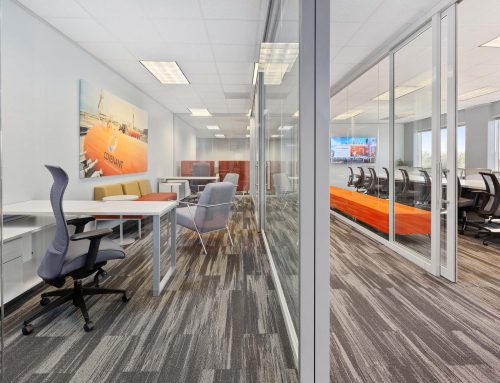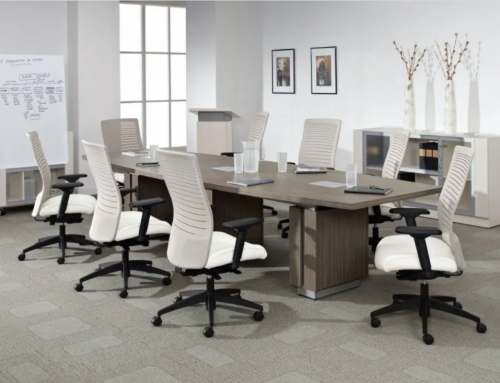Get the most from your office meetings
Office Meetings while widely misunderstood are an effective tool when properly executed. Many professionals have read and enjoyed the Dilbert comic’s expressions of pain and frustration from poorly managed meetings. Most of us, having had our share of disappointing meetings, can certainly relate. We’ll share a brief example and data illustrating how widespread the practice of bad meetings has become. Finally, we will cover nine rules for getting the most from your meetings.
The Never-Ending Meeting
It’s Friday, late morning. There was a monthly progress meeting scheduled at eleven and was supposed to last an hour. The person in charge of the office meeting was reading her reports when one particular metric caught the ire of another meeting attendee who began ranting (professionally) about how that specific item is measured. After the person reading the reports responded with her justification for the data she continued with the other topics. Once she finished, a touch early even, the disgruntled attendee chimed in again bringing the issue back to that metric from earlier. This turned into a discussion between the two, and after twenty minutes, it felt like it was just going in circles. After the sixty-minute mark, people’s faces started to display frustration simply wanting the meeting to end. Finally, the meeting ended with the discussion between the two not achieving anything particularly significant.
Wasted time and money
Many share aggravation with meetings. Ponder the following observations about the affliction of ineffective meetings in today’s workplace:
- The average executive attends 62 office meetings a month
- Over a third are considered a waste of time by those executives
- On average, fifteen percent of an organization’s collective time is spent in meetings
- Based on the average time spent in meetings, and a third of that time is wasted, the estimated bill for wasted time is roughly $37 billion a year in the U.S.
David Grady and Jason Fried, ‘The Economic Impact of Bad Meetings,’ TED talk, 17 November 2014
Is Your Meeting Space Outdated And Dysfunctional?
You’ve gathered together your top employee talent and are ready to knock out some important goals. If, after the meeting, you’re left wondering why nothing was actually accomplished, take a look around your meeting space? How is the seating? Is the table large enough to provide ample workspace? Do you have technology readily available? How about charging station and ample outlets? All these things matter for a great meeting.
Wow! Whether you organize meetings or simply attend them, it’s worth your time to become more effective at this professional skill. Imagine the gains that could be achieved if your company was even 5% better at meetings.
Nine no-brainer rules for getting the most from your meetings
1. Be clear about who is directing the meeting and the purpose it is meant to serve.
Every office meeting you have should be aimed at accomplishing someone’s goals; that person should be the one responsible for the meeting and should decide what they want out of it and how that will happen. Meetings without someone unquestionably in charge are at high risk of being without clear direction and therefore unproductive.
2. Be clear about the style of communication you use based on objectives and priorities.
If the goal is for people with differing opinions to work through their differences and attempt to get closer to a compromise (i.e., open-minded debate), the office meeting will run differently than if the goal is to educate. Debating can take much time, and that time will increase exponentially as the number of people participating increases, so choose the right people in the right quantity for that specific objective. In any discussion, be sure to limit participation to those whom you value most for that objective. Choosing people because their conclusion aligns with yours is the absolute worst practice. Group-think (people not asserting individual views) and solo-think (people being unwilling to consider the thoughts of others) are both hazardous.
3. When leading the discussion, be assertive but open-minded.
Resolving different perspectives can often be both difficult and time-consuming. It’s the responsibility of the office meeting leader to try and balance the conflicting perspectives while pushing through impasses to use the time wisely. What if someone inexperienced offers their opinion? Exploring the views and opinions of people still building their track record can give valuable insight into how they may handle new responsibilities. Time permitting, work through their reasoning so they can understand how their perspective might be wrong, but it’s also vital to open-mindedly consider if they might be right.
4. Beware of “topic slip.”
Topic slip is the random drifting from topic to topic without the resolution of any of them. One method to avoid this is keeping track of the conversation on a whiteboard so everyone can see the discussion as it unfolds and stay on track.
5. Enforce logic in conversations.
People can get heated when there is disagreement. Always remain calm and analytical. Remember, also, that emotions can skew how a person sees reality. For example, when someone says, “I feel that (something is true)” and continue as though it is fact, even though others may have a different interpretation, ask them, “Is it true?” to try and ground the conversation in reality.
6. Don’t lose personal responsibility in group decision making.
Too often, groups will decide to do something without clearly delegating responsibilities, so no one is clear about who is supposed to do what and follow up with whom. Be clear in delegating responsibilities.
7. Use the “two-minute rule” to limit unproductive interruptions.
The two-minute rule states that you have to allow someone that period of time, entirely uninterrupted, to explain their thoughts before stepping in with your own. This will ensure everyone has time to fully hash out and communicate their thoughts without the concern they will be misunderstood or trampled over by a louder voice.
8. Watch out for fast talkers.
Fast talkers speak faster than their words can be scrutinized, to push their agenda past other’s examination and objections. Fast-talking is most effective when used against people concerned with appearing stupid. Don’t be those people. Recognize your responsibility to make sense of things, and don’t move forward until you do. If you’re feeling pressure, say something to the effect of, “Sorry for being dumb, but I’ll need you to slow down so I can understand what you’re saying.”
9. Resolve conversations.
The objective of a discussion is to realize completion by getting everyone in sync, which in turn leads to decisions and action. Conversations failing to achieve completion are wastes of time. When there has been an exchange of ideas, it is imperative to wrap up by stating the conclusions. When there is agreement, verbalize it; if not, verbalize that. When further action is needed, put those tasks on a to-do list and delegate people to get them done specifying due dates. Document your conclusions, any working theories and the to-do list in a place that will lead to their use as a foundation for continued progress. To make this happen, assign a note taker.
Recommended Reading:
Veteran financier Ray Dalio (who in 1974, founded what is now the world’s largest hedge fund, Bridgewater Associates, which manages roughly $160 billion.) has become well known for creating a culture of radical honesty and transparency. The nine rules listed above can be found in his book Principles: Life and Work.
Consider implementing these rules into your own office meeting structure to get the most from your meetings and create an environment where the best ideas win. If you’d like an assessment of your conference room space, contact us, we can help!









